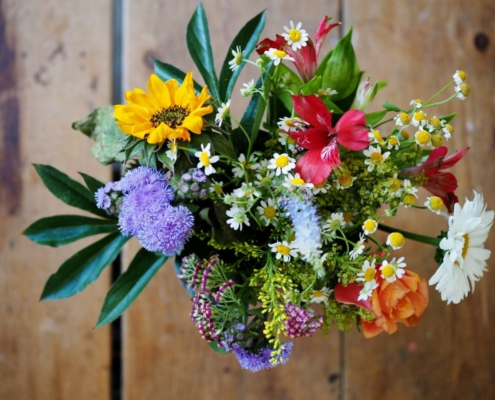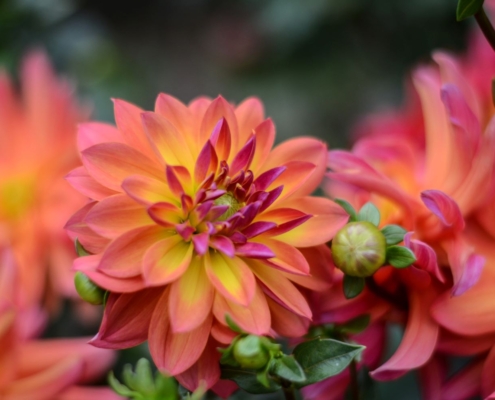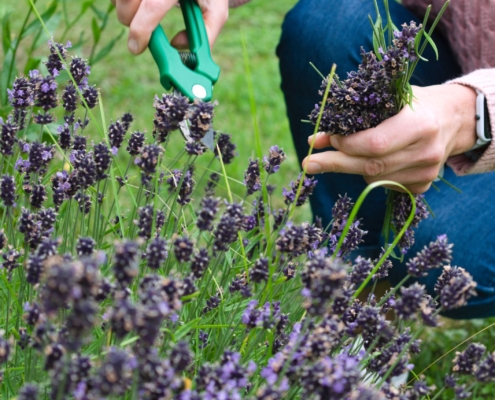Video: Lightbulb Terrarium with Garden Answer
Looking for some creative terrarium ideas?
Watch as Laura from @Garden Answer uses a unique lightbulb to plant some succulents!
Featured Products:
Looking for some creative terrarium ideas?
Watch as Laura from @Garden Answer uses a unique lightbulb to plant some succulents!
Featured Products:
You may think that when the weather cools, the gardening stops. But it doesn’t have to be that way! Planting herbs in the fall can make for a great head start in the spring. Plus, who doesn’t love to garden year-round? Here are our top five picks to get you started.
Parsley
Did you know that parsley planted in the fall actually produces more harvest than parsley planted in the spring? Grow it in part shade to full sun and keep the soil moist by watering regularly. Give it the healthiest start by using organic potting mix.
Thyme
Thyme is a great addition to almost any dish and the perfect garnish for your fall cocktails! Grow this herb in full sun near your brightest window. As a bonus, you can plant thyme alongside rosemary, which has the same light and watering needs.
Sage
Sage is a fragrant herb that also makes a great addition to your kitchen for special meals. Make sure this herb gets plenty of sunlight and water once the top layer of soil is dry. Be wary of mildew growing on your sage, and be sure to give it proper air circulation. Give it a head start with Espoma Bio-tone Starter Plus.
Lavender
Who doesn’t love the smell of lavender? Whether dried or fresh, this fragrant herb can change the ambiance of your home with its calming scent and its beautiful purple appearance. Give your lavender full sun — at least six hour a day — and allow the soil to dry out between waterings. Be careful not to overwater this herb, especially in the cooler months.
Chives
As another great culinary herb, chives can add the ideal amount of seasoning to so many dishes. Grow them in a sunny spot and be careful not to keep them too close to your heater. Let the soil dry between waterings.
Don’t let the cooler weather stop you from gardening! If you’re struggling to get enough light for any of these herbs, consider supplementing with grow lights.

It’s wedding season! Whether you’re having a dreamy, late summer wedding or a rustic, autumn wedding, wildflower bouquets can match almost any color palette and theme. You can even grow your bouquet in your own backyard with the right timing and resources. Here are a few suggestions as well as tips and tricks to have beautiful blooms on your big day!
Zinnias
If you’re new to gardening, zinnias could be a great place to start! They are one of the easiest wildflowers to grow and bloom from late spring until the first frost, which is sometime in the fall, depending on where you live. They also grow in a variety of bright colors, so you have a large palette to choose from. Make sure to grow them in full sun!
Daisies
If you want flowers as white as your dress, daisies are perfect. For extra vibrant white petals, use Flower-tone. Daisies are a convenient option if you’re short on space in your garden, as they grow about 1–3 feet tall. They typically bloom in full sunlight from late spring to early fall.
Baby’s Breath
Baby’s breath is the perfect flower to fill the spaces between larger blooms in your bouquet. They’re low maintenance, deer resistant, and have an extended bloom time of four weeks. Grow in full sun.

Sunflowers
Who doesn’t love sunflowers? Single-stem varieties will grow quickly and produce one stem per plant. The classic golden sunflowers can add a beautiful pop of color to your bouquet, but if you’re looking for something a little more unique, try growing Lemon Queen sunflowers, which have more of a lemon shade of yellow than the typical golden variety. For the biggest, brightest blooms, feed your sunflowers Espoma’s Bio-tone Starter Plus and grow in full fun or half shade.
Cutting
Once your wildflowers are in bloom, cut the stems. It’s best to do this in the early morning or in the late evening so that the sun and heat do not wilt the flowers. Foliage placed in water may grow bacteria that will kill the flowers prematurely. You can prevent this by stripping the foliage from the bottom of the stem gently using your hands or scissors.
A bouquet of wildflowers makes a beautiful addition to your wedding, but if bulbs are a better fit for you, check out these tips from Laura from Garden Answer!
Featured Products
Summer is quickly coming to an end. As we say goodbye to summer blooms, we get to welcome beautiful autumn flowers like mums, sunflowers, pansies, and more! If you’re looking to add some fall decor to your home, bringing your garden inside from a cutting garden is a great way to add a pop of color and change things up for fall.
Put together a cutting garden that is personalized to you and the colors that will make you happy. Don’t worry about whether or not the plants “go together.” Get creative! Here are some of the best autumn blooms for bouquets that are vibrant and trendy.

Getting started:

Once your plants start to bloom, start cutting! The more you cut, the more the plants will flower. Happy fall, and happy gardening!
Featured Products
Take a look at how Summer Rayne Oakes from Flock Finger Lakes uses Bio-tone Starter to enhance her soil with the right nutrients and make her garden flourish!
Featured:
Have you ever heard of crevice gardening? Follow along as Summer Rayne Oakes of Homestead Brooklyn shows us how to get it done in a container with the help of Espoma.
Featured:
Follow along as Laura from @Garden Answer takes care of her new fiddle leaf fig cuttings with the help of Espoma!
Featured:
Watch as Laura from @GardenAnswer plants a variety of lilies with the help of Espoma!
Featured:
Ready to make some fresh salsa this summer? Join Laura from @GardenAnswer as she plants all the ingredients in a miniature garden using her favorite Espoma products.
Featured:
Laura from @Garden Answer is planting sweet and spicy peppers in her garden! Watch to find out which Espoma products help her get the job done.
Featured:
